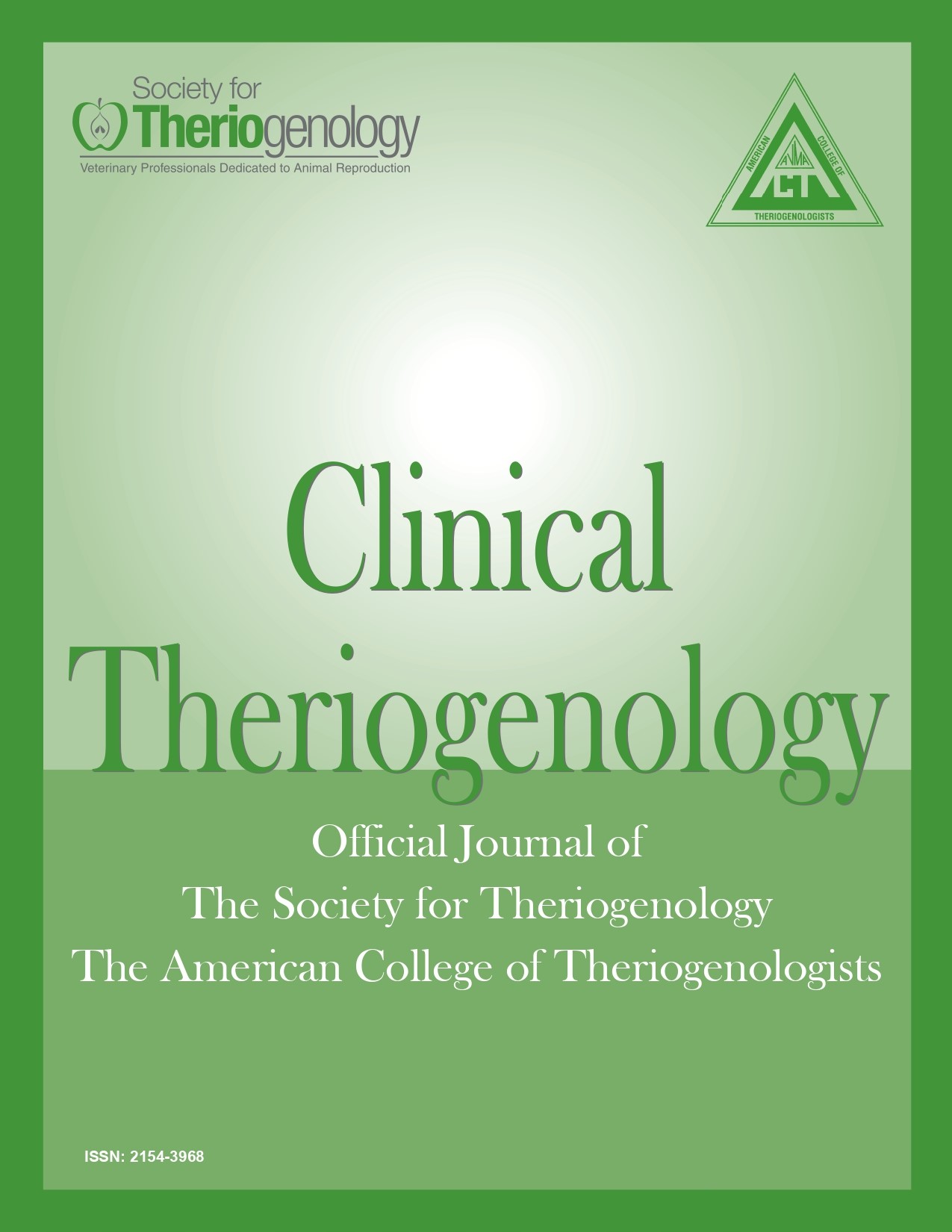Effect of omega 3, 6 and 9 fatty acids and vitamin E on canine semen motility, morphology and cryopreservation
Abstract
There are currently a number of supplements commercially available that claim improvement of male fertility. There are few documented studies in stud dogs investigating the efficacy of these supplements, most notably those containing fatty acids. It has been found that supplementation with Vitamin E, which has a similar action as fatty acids, did show some success in dogs. Additionally in horses, supplementation with DHA, an Omega 3 fatty acid, did improve poor semen quality. The objective of this study was to investigate the effects of a commercial omega fatty acid supplement (OM3 Gold 1000; Spectrum Veterinary; Phoenix, AZ), on canine semen quality parameters and survival through the cryopreservation process. Each capsule contained 144 mg of Linoleic Acid, 500 mg of Linolenic Acid, 203 mg of Oleic Acid and 20 IU of Vitamin E. Twelve dogs were assigned to either the treatment (n=8) or control group (n=4), with owners and kennel managers blinded to the treatment. The eight treated dogs were further broken down into below average (n=4) and average (n=4) with regard to initial post thaw motility of 19% and 52%, respectively. All treatment dogs received one capsule of OM3 Gold 1000 by mouth twice daily for a period of 8 weeks. Ejaculates were collected prior to initiation of treatment (time zero) on all dogs and then every two weeks for 3 months. Motility, morphology and total sperm number were evaluated on each collection. Ejaculates were cryopreserved at time zero and again at 8 weeks, with post-thaw motility as the measured observation. After 8 weeks, total sperm number did not differ between the treatment (546 million to 708 million) (P=0.063) and control groups (625 million to 701 million). Treated dogs in the below average group had an increased post thaw motility from 19% to 51% (P=0.043), whereas control dogs went from 52% to 57% after 8 weeks. Normal morphology in the below average treated group started at 65% and increased to 74% (P=0.058) after 8 weeks, however the control dogs went from 57% to 53%. Fatty acid analysis via gas chromatography was performed on the serum and seminal plasma at time zero and 8 weeks after treatment. In all treatment dogs, there was a decrease in concentration of omega 6 linoleic acid (P=0.027) in the serum, whereas there was a decrease in concentration of omega 6 arachidonic acid (P=0.023) in the seminal plasma. It appears that supplementation with OM3 Gold 1000 may help improve post-thaw motility and decreasing the concentration of pro-inflammatory omega 6 fatty acids.
Downloads

This work is licensed under a Creative Commons Attribution-NonCommercial 4.0 International License.
Authors retain copyright of their work, with first publication rights granted to Clinical Theriogenology. Read more about copyright and licensing here.





